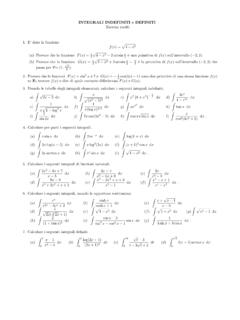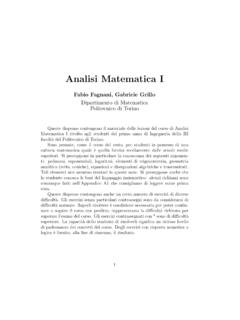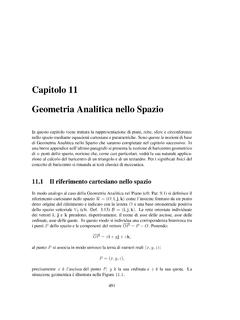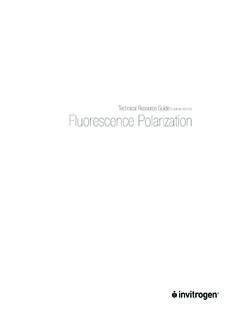Transcription of An Introduction to Fluorescence Polarization - Polito
1 The theory of Fluorescence Polarization , first described in 1926 by Perrin, is based on theobservation that fluorescent molecules in solution, excited with plane-polarized light, will emit lightback into a fixed plane ( the light remains polarized) if the molecules remain stationary during theexcitation of the fluorophore. Molecules, however, rotate and tumble, and the planes into which lightis emitted can be very different from the plane used for initial Polarization of a molecule is proportional to the molecule`s rotational relaxation time, or the timeit takes to rotate through an angle of . Rotational relaxation time is related to viscosity, absolutetemperature, molecular volume and the gas : When a fluorescent molecule is excited with plane polarized light, light is emitted in thesame polarized plane, provided that the molecule remains stationary throughout the excited state(which has a duration of 4 nanoseconds for fluorescein).
2 If the molecule rotates and tumbles out of thisplane during the excited state, light is emitted in a different plane from the excitation light. If verticallypolarized light is exciting the fluorophore, the intensity of the emitted light can be monitored invertical and horizontal planes (degree of movement of emission intensity from vertical to horizontalplane is related to the mobility of the fluorescently labeled molecule). If a molecule is very large, littlemovement occurs during excitation and the emitted light remains highly polarized. If a molecule issmall, rotation and tumbling is faster and the emitted light is depolarized relative to the of Fluorescence Polarization :I - I P = -----------------I + I I .. Intensity with polarizers parallelI .. Intensity with polarizers perpendicularAn Introduction to Fluorescence PolarizationSee below a video clip describing the principle of FP:Explanation: Small molecules rotate quickly during the excited state, and upon emission, have lowpolarization values.
3 Large molecules, caused by binding of a second molecule, rotate little during theexcited state, and therefore have high Polarization for Fluorescence PolarizationFluorescence Polarization is a technique specially applied to study molecular interactions. It gives adirect, nearly instantaneous measure of a tracer`s bound/free experiments are done in solution without solid supports, allowing true equilibrium analysis downto the low picomolar range. FP measurements do not adulterate samples, so they can be treated andreanalyzed in order to ascertain the effect on binding by changes such as pH, temperature, and saltconcentration. Additionally, FP experiments are taken in "real-time" and experiments are not limitedto equilibrium binding of application areas Receptor/ligand studies ( hormone/receptor assays) Protein/peptide interactions DNA/protein interactions Tyrosine Kinase Assays Competitive ImmunoassaysAdvantage of FPFluorescence Polarization offers numerous advantages over more conventional methods to study thebinding of proteins to nucleic acids (particularly in that no hazardous radioactive waste is generated)and has a lower limit of detection in the sub-nanomolar range.
4 FP is furthermore truly homogeneous,allows real-time measurements (kinetic assays), is insensitive to variations in concentrations and is anoptimal solution for homogeneous assay formats (no separation by washing).














